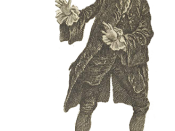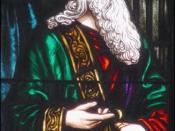A distinguishing and frequently mystifying feature of William Shakespeare's tragedy Hamlet is the presence of dark humor: constant wordplay, irony, riddles, clowning, and bawdy repartee. The language of Hamlet is cleverly and specifically designed in the guise of Shakespeare's dark humor. In regards to all uses of comedy and wit, the language of this play is meant to be pleasing to the audience but not to the characters. This concept is essential in understanding what place comedy has in a tragedy such as Hamlet. Hamlet's very use and style of language, especially the use of the pun, the dialogue with the minor character Polonius, and the graveyard scene reveals intentions and plans through the mode of comic relief.
The exchange of wit often relied heavily on the identity of the actors (Thomson 116). Shakespeare writes the plays for his audience in his time, so the audience would be familiar with the actors.
Thus, there may have been some very pointed sarcasm thrown into the dialogue that seems very funny to the 17th century playgoer (depending on the real identity of the speaker), but appears mystifying to the modern viewer. The pun is the most frequent of Shakespeare's comic uses.
Act one introduces the reader to Hamlet, who seems to be showing signs of strong angst towards his elders, but uses biting remarks to defend himself. Hamlet believes that humor (albeit sarcastic humor) suggests a nimble and flexible mind, as well as an imagination. Wittenberg is a pinnacle of wits, which is where, of course, Hamlet wants to return to (Watts 94). "A little more than kin, and less than kind" (1.2.65). Hamlet's first words in the play show him playing with words in order to state a paradox: Claudius is twice related to him, as uncle and stepfather, but...


